Based on the official implementation from Yoni Kasten of the paper Layered Neural Atlases for Consistent Video Editing, this repository brings some improvements in performance and some new features to this amazing algorithm.
The paper introduces the first approach for neural video unwrapping using an end-to-end optimized interpretable and semantic atlas-based representation, which facilitates easy and intuitive editing in the atlas domain.
Figure 1: Algorithm Flowchart.
The new features that this repository brings are:
- Paper's Multi Layer Foreground Atlases feature support. (Thanks to Yoni Kasten)
- Support to Animated Atlases.
- Remove Video Foreground or Background Layers.
- Refactored code and some performance improvements.
- More intuitive and easier to use interface.
- Option to generate masks from videos with MODNet: Trimap-Free Portrait Matting in Real Time
- Experimental Windows support. (Need to disable
MaskRCNNdetectron2 feature and useMODNetto do mask extraction)
This repository contains 7 demo projects to better understand the algorithm's operation and capabilities. These projects can be downloaded in ZIP format from this google drive link.
After downloading, just extract the contents of the ZIP file and copy the files to the projects folder like this:
projects
├── bear
├── blackswan
├── lucia_multi
├── lucia_single
├── mallard_water
├── paragliding
└── surf
| Original | Edited | |
|---|---|---|
| Blackswan |  |
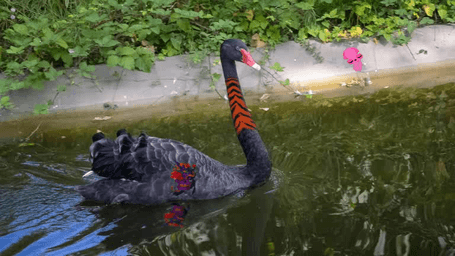 |
| Paragliding | 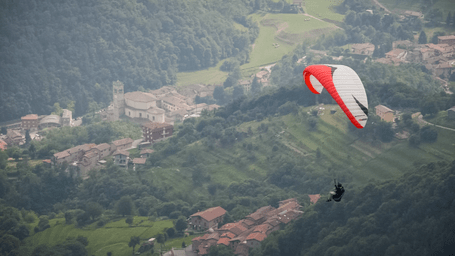 |
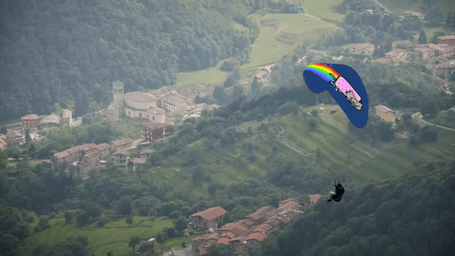 |
| Surf | 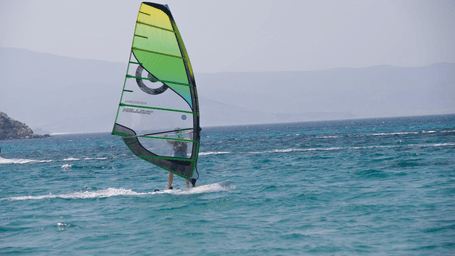 |
 |
The installation process is the same as the official repository. If you already used the original version, skip this step. The code was tested with python 3.7 and pytorch 1.6. but it may work with other versions.
You can create an anaconda environment called neural_atlases with the required dependencies by running:
conda create --name neural_atlases python=3.7
conda activate neural_atlases
conda install pytorch=1.6.0 torchvision=0.7.0 cudatoolkit=10.1 scipy scikit-image tqdm opencv -c pytorch
python -m pip install wandbIf you want to use MaskRCNN for mask extraction (Linux Only), you will need to install the detectron2 package:
python -m pip install detectron2 -f https://dl.fbaipublicfiles.com/detectron2/wheels/cu101/torch1.6/index.htmlFor each new project, new models need to be trained from scratch. To train a model you can use the train.py script.
To create a new project, you will need to create the project folder structure inside the projects directory.
projects # Projects directory
└── hello_world # 'hello_world' project files
├── frames # 'hello_world' project video frames
│ ├── 00000.jpg
│ ├── 00001.jpg
│ └── ...
└── scribbles # 'hello_world' scribbles files (Only for Multi Layer Foreground)
├── 00000.png
├── 00001.png
└── ...
After configuring the file structures for your project, just run the train.py script and wait for the model to train.
python train.py -p hello_world -s 300000
-p (--project): Select which project will be trained (Required)-s (--steps): Sets by how many steps the models will be trained (Optional)
This script will generate Alpha masks and Optical flow files to use in the training process. These files will be saved on results directory, inside the project's directory.
Here, we have two ways of generating masks for a given video, with MaskRCNN or with the MODNet algorithm.
To use the MaskRCNN video mask extraction algorithm (Linux Only), you can use:
python train.py -p hello_world -s 300000 -c ./configs/single_layer.json-c (--config): Select the configuration file that will be used in the project (Optional)
Better results can be achieved by selecting a class for MaskRCNN through the foreground_class parameter in a configuration file. For example:
{
"foreground_class": "bird"
}By default, the MaskRCNN algorithm will be used for mask extraction with the anything value in foreground_class parameter.
Note: This repository contains example configuration files in ./configs directory, however custom configuration files can also be used.
You can also use the MODNet: Trimap-Free Portrait Matting in Real Time official implementation to do video mask extraction. To use it (Windows Support), you can use:
python train.py -p hello_world -s 300000 -c ./configs/single_layer_modnet.jsonIt can also be enabled through the foreground_class parameter in a configuration file. For example:
{
"foreground_class": "modnet"
}Note: The MODNet algorithm works better with videos that contains humans.
The Multi Layer Foreground Atlases feature can be enabled through the configuration file multi_layer.json:
python train.py -p hello_world -s 300000 -c ./configs/multi_layer.jsonOr simply by editing the foreground_layers property inside any configuration file to an integer value bigger than 1.
Note: For better results when using this feature, add scribbles
files to the scribbles directory of the selected project.
In this way, you will guide the algorithm, informing which pixels will be mapped to each layer.
Examples of how to add scribbles to your project can be found in lucia_multi demo project.
An example of how much better the results can be when using this feature:
| Multi Foreground Atlases | Single Foreground Atlas |
|---|---|
 |
 |
When a trained model is available, you can run the evaluation.py script to generate debugging files and visualize the performance of the algorithm on project.
python evaluate.py -p hello_world
-p (--project): Select which project will be evaluated (Required)
In most cases, it will not be necessary to run this script, as the evaluation function runs periodically during training.
After training a good model for your project, you can finally start editing the video, starting with the atlas generation process.
By default, the model training process already generates global static atlases for the foreground and background layers that can be used for editing. It can be found at ./projects/{project_name}/results/atlases.
However, with the generate_atlases.py script, it is possible to generate atlases from edits in a video frame or even enable support for animations.
To generate atlases from an edited video frame, you can do:
python generate_atlases.py -p hello_world -cf 00000.png-p (--project): Select which project to load the models that will be used (Required)-cf (--custom_frame): Path to an edited video frame that will be used to generate atlases (Optional)
Example of generated atlases for the surf demo project:
| Background Atlas | Foreground Atlas |
|---|---|
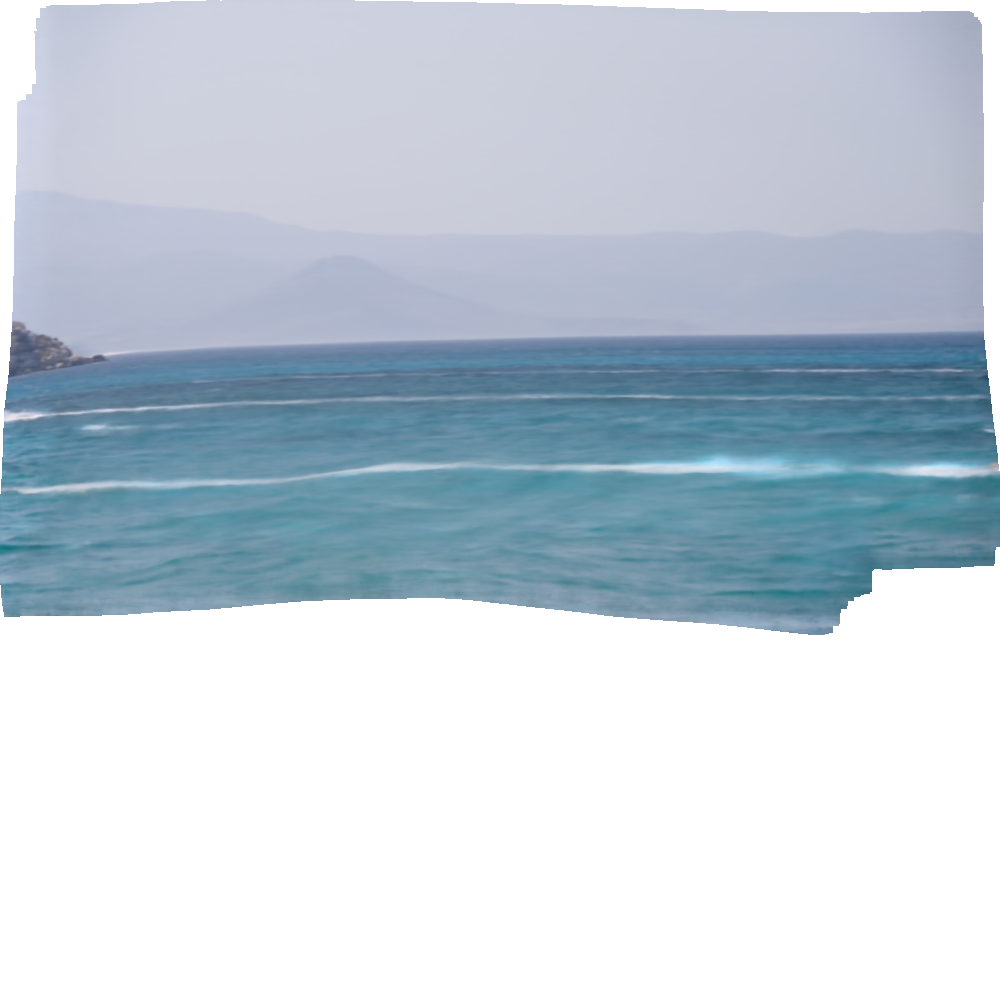 |
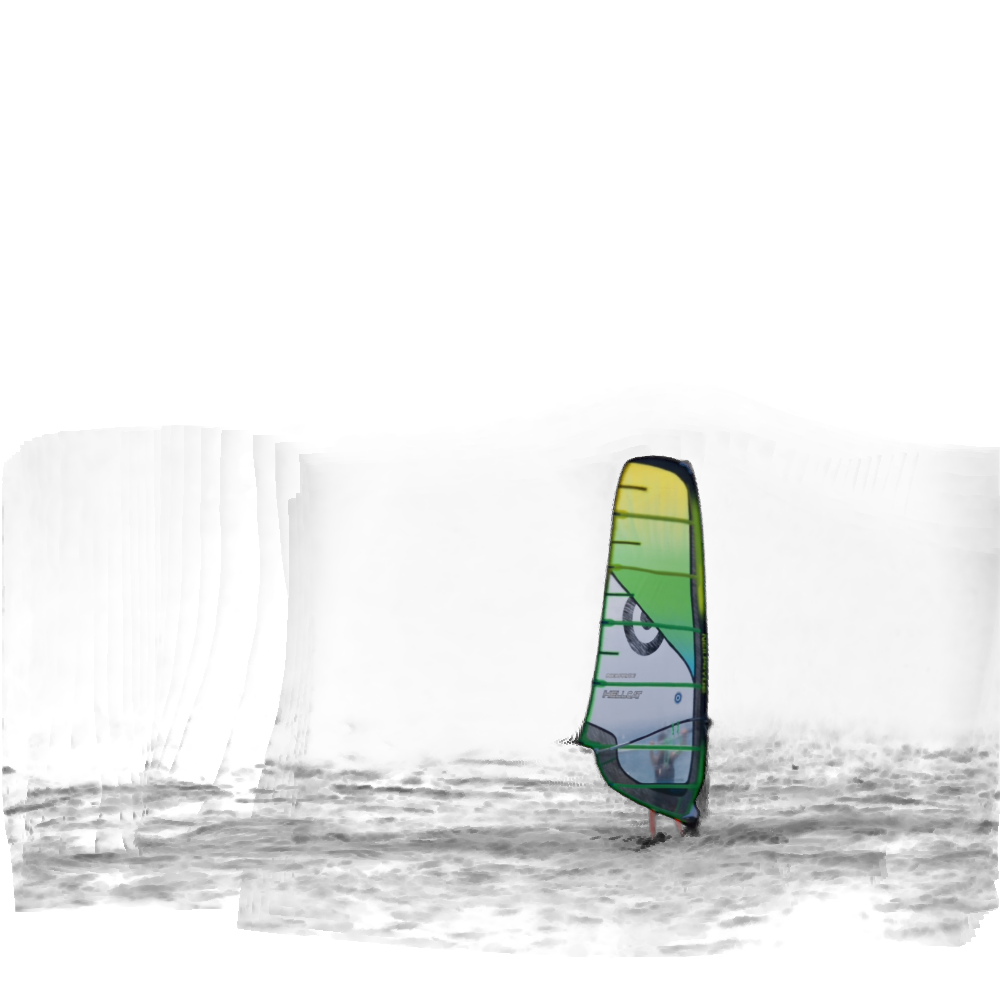 |
To generate atlases with enabled animation support you only need to add the -a argument to the command line.
python generate_atlases.py -p hello_world -a-p (--project): Select which project to load the models that will be used (Required)-a (--animated): Flag to enable animation support (Optional)
Note: Unlike static atlases, animated atlases are directories with an atlas file for each frame of the video.
animated_atlases # Animated atlases directory
├── background_atlas # Background animated atlas
│ ├── 00000.png
│ ├── 00001.png
│ ├── 00002.png
│ ├── 00003.png
│ └── ...
└── foreground_atlas_0 # Foreground animated atlas (Layer 0)
├── 00000.png
├── 00001.png
├── 00002.png
├── 00003.png
└── ...
And finally, after editing the generated atlases in an image/video editing software (e.g. Photoshop or Premiere),
you can use the render_video.py script to render the original video with your own edits.
python render_video.py -p hello_world -f foreground_atlas.png -b background_atlas.png -o output.mp4-p (--project): Select which project to load the models that will be used (Required)-f (--fg_atlas): Indicates the path of the edited foreground atlas (Optional)-b (--bg_atlas): Indicates the path of the edited background atlas (Optional)
To use animated atlases, just point the foreground/background arguments to the directory of the animated atlas instead of the file:
python render_video.py -p hello_world -f animated_foreground_atlas -b animated_background_atlas -o output.mp4In some cases, it may be more convenient to use an animated atlas for one layer and a static atlas for another, and this can be done like this:
python render_video.py -p hello_world -f animated_foreground_atlas -b background_atlas.png -o output.mp4As mentioned in the article, it is also possible to remove the foreground and background from the video by manipulating the alpha variable in the pixel reconstruction formula. This effect can be easily achieved by running:
python render_video.py -r {foreground/background} -o output.mp4-r (--remove): Layer to remove from output video. (foregroundorbackground)
Note: If neither an atlas file, nor the -r (--remove) argument is passed to the script render_video.py, it will result in a copy of the original video.
Example of background removal on paragliding demo project:
| Original | w/o Background |
|---|---|
 |
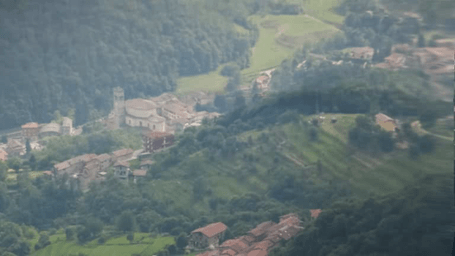 |
If you find their work useful in your research, please consider citing:
@article{kasten2021layered,
title={Layered neural atlases for consistent video editing},
author={Kasten, Yoni and Ofri, Dolev and Wang, Oliver and Dekel, Tali},
journal={ACM Transactions on Graphics (TOG)},
volume={40},
number={6},
pages={1--12},
year={2021},
publisher={ACM New York, NY, USA}
}
NeuralAtlases is released under the MIT license. Please see the LICENSE file for more information.


